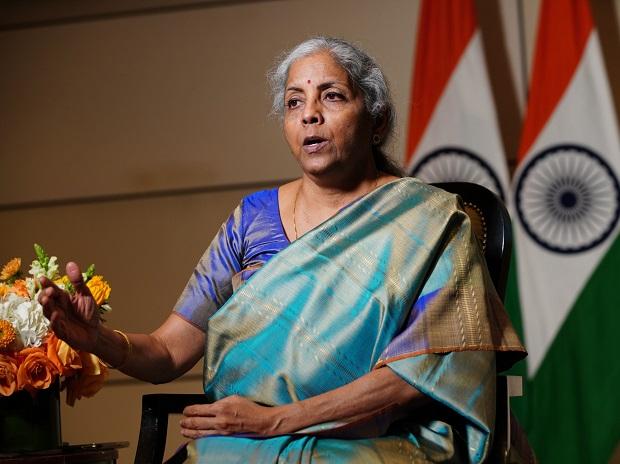The Navy and Coast Guard will conduct the third, and largest, edition of the comprehensive coastal defence Exercise Sea Vigil-2022 on Tuesday and Wednesday.
On the fateful evening of November 26, 2008, 10 heavily armed Lashkar-e-Toiba terrorists sailed a small boat right up to the shore of Mumbai City. Getting off the boat in the vicinity of their targets, they shot dead 166 people and wounded more than 300.
A stunned Navy, ordered to ensure this never happens again, joined hands with the Coast Guard and the police forces of coastal states to put in place a coastal defence structure that watched over and guarded the approaches to India’s 7,516-kilometre coastline.
In 2018, for the first time, the Navy conceptualised a national-level coastal defence exercise to validate the various measures that had been instituted for enhancing maritime security since 26/11. The third edition of that exercise will begin on Tuesday.
“Coastal security being a major sub-set of coastal defence, the concept of ‘Exercise Sea Vigil’ is to activate the coastal security apparatus across India and assess the overarching coastal defence mechanism,” the Ministry of Defence (MoD) said on Monday.
The exercise will be undertaken along the 7,516-km coastline, and in India’s two million square km Exclusive Economic Zone (EEZ). It will involve all coastal states and Union Territories, along with other maritime stakeholders, including the fishing and coastal communities, the MoD said.
“The scale and conceptual expanse of the exercise is unprecedented in terms of the geographical extent, the number of stakeholders involved, the number of units participating and in terms of the objectives to be met,” said the MoD.
Exercise Sea Vigil is part of the build up towards the biennial Theatre Level Readiness Operational Exercise (TROPEX), in which the Navy validates its warfighting readiness every two years. Together, Sea Vigil and TROPEX will assess the Navy’s reactions to the entire spectrum of maritime security challenges — from terrorist attacks and piracy to aircraft carrier and submarine operations.
Besides the Indian Navy, Coast Guard, Customs and other maritime agencies, the exercise will also be facilitated by the Ministries of Home Affairs; ports shipping and waterways; petroleum and natural gas; fisheries, animal husbandry and dairying; and other government agencies.
The MoD said, “While smaller scale exercises are conducted in coastal states regularly, including combined exercises amongst adjoining states, the conduct of exercise Sea Vigil at the national level is aimed to serve a larger purpose.”
“Exercise Sea Vigil-2022 will provide a realistic assessment of our strengths and weaknesses and thus will help in further strengthening maritime and national security,” said the MoD.
In the wake of the 26/11 attacks, the Navy was made the senior partner for coastal security, overseeing operations undertaken jointly with the Coast Guard.
The government established a Maritime Security Advisory Board, which was to speed up ministerial decision-making in an emergency. A three-star admiral was appointed maritime security adviser (MSA). Joint operation centres (JOCs) were set up in Kochi, Mumbai, Port Blair, and Visakhapatnam.
The commanders-in-chief (CinCs) of the Navy’s three commands – Western, Southern and Eastern commands – were additionally designated as CinCs Coastal Defence in their respective areas.
Also created was a Coastal Command, headed by the Coast Guard chief, to co-ordinate the activities of central and state agencies, including the coastal police forces. 26/11 triggered a major Coast Guard expansion, with the force growing to thrice its size in a decade. More than 100 patrol vessels and aircraft have been inducted.
Also created was a national command network for real time maritime domain awareness, which linked the Navy and Coast Guard operations rooms with higher command; a multi-agency static coastal radar and automatic identification system (AIS) chain at 46 sites; and the provision of identification transponders for some 300,000 fishing craft below 300 tons.
Finally, the government planned the development of intelligence networks among fishing communities, which were regarded as a front line for gathering actionable data. Identity cards were issued to all fishermen and other residents of coastal villages.
Meanwhile, the marine police forces of coastal states, whose jurisdiction extended five nautical miles out to sea, were given 73 police stations and a range of outposts. The coastal police was beefed up with the acquisition of 204 interceptor craft – a mix of Invader and Hellraiser rigid-hull inflatable boats bought from Greek company Motomarine.
Note:- (Not all news on the site expresses the point of view of the site, but we transmit this news automatically and translate it through programmatic technology on the site and not from a human editor. The content is auto-generated from a syndicated feed.))




What’s up, yup this piece of writing is actually pleasant and I
have learned lot of things from it about blogging. thanks.